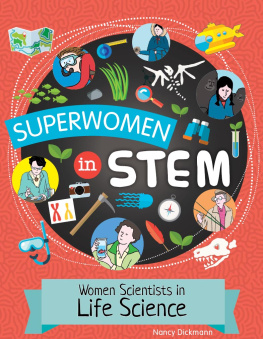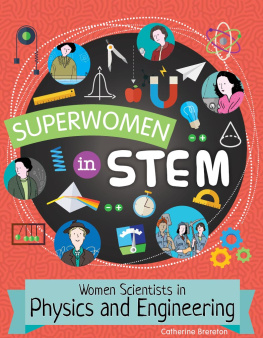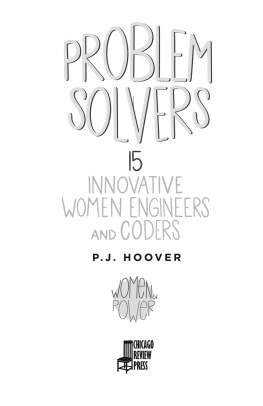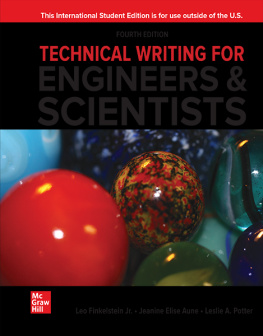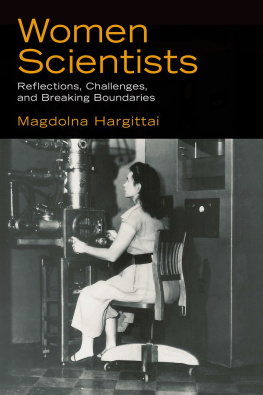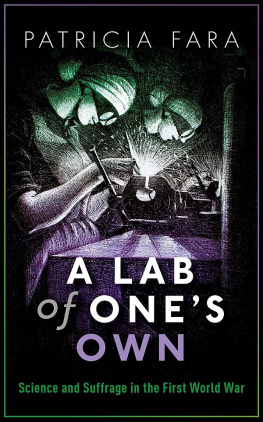Thank you for buying this ebook, published by NYU Press.
Sign up for our e-newsletters to receive information about forthcoming books, special discounts, and more!
Sign Up!
About NYU Press
A publisher of original scholarship since its founding in 1916, New York University Press Produces more than 100 new books each year, with a backlist of 3,000 titles in print. Working across the humanities and social sciences, NYU Press has award-winning lists in sociology, law, cultural and American studies, religion, American history, anthropology, politics, criminology, media and communication, literary studies, and psychology.
Breaking into the Lab
Breaking into the Lab
Engineering Progress for Women in Science
Sue V. Rosser

NEW YORK UNIVERSITY PRESS
New York and London
www.nyupress.org
2012 by New York University
All rights reserved
References to Internet websites (URLs) were accurate at the time of writing.
Neither the author nor New York University Press is responsible for URLs that
may have expired or changed since the manuscript was prepared.
Library of Congress Cataloging-in-Publication Data
Rosser, Sue Vilhauer.
Breaking into the lab : engineering progress for women in science /
Sue V. Rosser.
p. cm.
Includes bibliographical references and index.
ISBN 9780814776452 (cl : alk. paper)
ISBN 9780814771525 (ebook)
ISBN 9780814771532 (ebook)
1. Women scientistsUnited States.
2. Sex discrimination in scienceUnited States.
I. Title.
Q130.R674 2011
500.82'0973dc23 2011039757
New York University Press books are printed on acid-free paper,
and their binding materials are chosen for strength and durability.
We strive to use environmentally responsible suppliers and materials
to the greatest extent possible in publishing our books.
Manufactured in the United States of America
10 9 8 7 6 5 4 3 2 1
To academic women, scientists, and engineers
Contents
Acknowledgments
Without the perspectives, ideas, and guidance of so many people, this book would not have been possible. The mentors during my own graduate, postdoctoral, and professional careers who directed me and shared their insights and opinions helped me to understand academia, science, and the profession. I am particularly grateful to the many Professional Opportunities for Women in Research and Education (POWRE) and Clare Booth Luce (CBL) awardees, as well as the Association for Women in Science (AWIS) Fellows, who willingly shared with me their professional and personal experiences as women scientists through interviews and email surveys. Their comments and responses facilitated my understanding of which issues were structural, common, or unique. More importantly, they led me to consider how those obstacles and barriers almost all women in science face might be overcome by institutional changes. I thank my own family, especially Pat, my daughters Meagan and Caitlin and grandsons Charlie, Cole, and Graeme, for reminding me not only that issues of balancing career and family continue for the next generation, but also for allowing me to see that, from the perspective of a senior woman academic and grandma, a wonderful family makes the balancing act completely worthwhile. Finally, I would like to acknowledge the guidance of editors Aiden Amos and Ilene Kalish at NYU Press for bringing this volume to publication.
1
Introduction
Why Women in Science Are Still Controversial after Thirty Years
In 1968, when I applied to four graduate schools and was accepted to all but Harvard, I wondered why Stanford had failed to provide me with support, since both Berkeley and Madison had. When I called the chair of the department to inquire about this, I was told that they had accepted me only because of my very high grades and GRE scores, since normally they did not offer a place to a married woman who was likely just to have children and waste her graduate education.
In 1971, I was directed toward a dissertation topic on fossil rodents based primarily at the Field Museum in Chicago because my major professor assumed that, since I was pregnant with my first child, I would not want to go to Africa for dissertation field research as most of his other students did. In 1975, when I became pregnant with my second child, my postdoctoral advisor suggested that I get an abortion. He said the timing for having another child at that point was not good for the research; he said we needed to collect more data to improve our chances of getting the grant renewed.
Despite these and other obstacles, I did go on to have a successful career in academia, culminating in my serving as a dean of liberal arts at a research I institution for ten years before attaining my current position as provost at a large comprehensive university. The types of barriers, obstacles, and discrimination that women scientists, engineers, and I faced 30 or 40 years ago, and some that slightly younger women faced 10 or 20 years ago, now appear overt and obvious. While todays obstacles seem covert and less clear, my junior colleagues continue to face similar issues, just manifested now in different forms. This volume explores these similarities and differences and their impacts upon the careers of women scientists and engineers.
The Impact of Summers Remarks
On January 14, 2005, I was an invited speaker at the National Bureau of Economic Research at Harvard University where President Larry Summers delivered his now infamous speech. Summers drew on anecdotes and popular outdated or pseudo-science to make three points explaining the paucity of women scientists and engineers: (1) women are unwilling or unable to work the 80-hour weeks required for success in science at top-flight academic institutions; (2) innate or biological factors, rather than socialization, probably account for sex differences in mathematical aptitude and also for adult preferences for choice of academic study and occupational field; (3) discrimination, which he defined as a taste for hiring people like oneself, does not exist in academia because that would be eliminated through market forces by lesser institutions hiring highly qualified women and minorities, thereby gaining a competitive advantage.
The following quotation from the transcript of Summers remarks captures the essence of his argument: So my best guess, to provoke you, of whats behind all of this is that the largest phenomenon, by far, is the general clash between peoples legitimate family desires and employers current desire for high power and high intensity, that in the special case of science and engineering, there are issues of intrinsic aptitude, and particularly of the variability of aptitude, and that those considerations are reinforced by what are in fact lesser factors involving socialization and continuing discrimination (Summers 2005).
Of the some 40 people present at the closed, invitational meeting, most of us, individuals who had worked and conducted substantial research on women in science for more than two decades, were appalled and shocked by his remarks. From the media accounts, some of the Harvard faculty at the meeting, and a few other individuals, mostly economists, agreed with the remarks he made during his prepared presentation that lasted more than one hour.
Despite his resignation from the Harvard presidency and appointment as head of the National Economic Council in the Obama administration, Larry Summers comments generated a firestorm which continued for several months and still persists. On June 7, 2010, John Tierney began his
Next page


